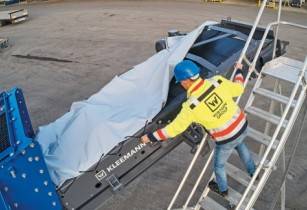With SmartSteel 1.0, SSAB is one step closer to the vision of having all data available in the cloud ? an Internet of Materials where customers can follow the steel all the way from the mill to the end product
The first version of the SSAB SmartSteel service enables customers to scan products and access material information through the new SmartSteel app.
SmartSteel gives steel a digital identity, making the data and instructions relating to any steel item available, regardless of where the item is used. With the SmartSteel app, customers can identify products, examine material properties, download material certificates and give feedback. Each link in the production chain can then utilize and add to this data. The product is marked at the mill and the data is uploaded to a cloud service. Sheet bundles are scanned with bar codes and steel plates are scanned through the plate number. The customer uses the SmartSteel app to identify the product and obtain the right data.
Traceability and documentation automation are the most obvious customer benefits of SmartSteel. However, getting rid of folders and pdf attachments is a good start, but the true value lies in the collaboration networks.
Internet of Materials
The whole idea of SmartSteel is continuous development. In the longer term, according to SSAB, SmartSteel will be part of a platform where different actors can share data and solve problems together. The transformation is similar to the spread of factory automation in past decades. The difference now is that what is taking place is across business boundaries, often digitally. ?In the future, steel will be able to communicate its properties and processing instructions to the machine that processes it?, says Niko Korte, head of SSAB digital business development.
?The machine will then adjust itself automatically. The result is less waste and shorter production time.?
Other actors will be able to join in producing extra services for Supply Chain management or the reuse of products, for example. Wide-scale reuse and recycling of structures, components and materials also call for new ways of material identification, marking and data management.
Functionalities
? Mobile app to identify products, download material certificates and give feedback.
? Bar codes are used to identify sheet bundles, coils and slit strips. Heavy plates are identified by scanning the plate marking.
? The service is initially available for of SSAB Special Steels and SSAB Europe products.




























